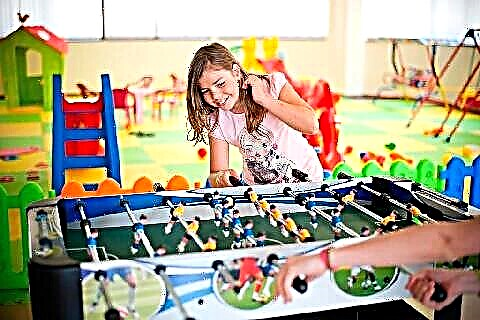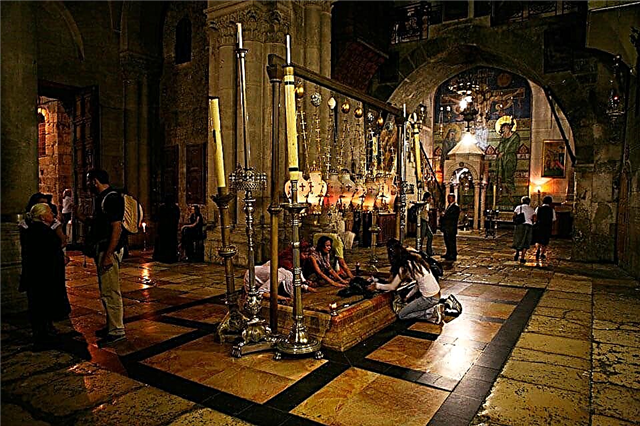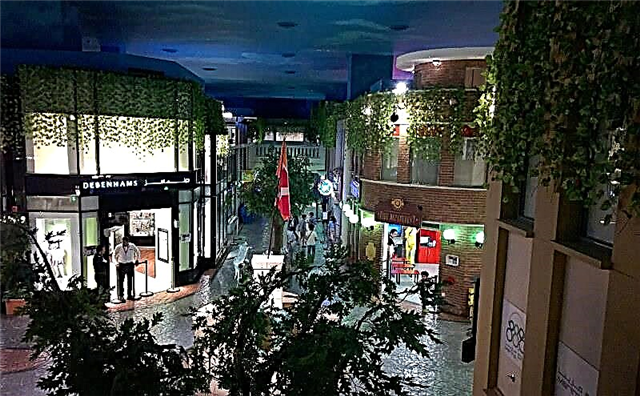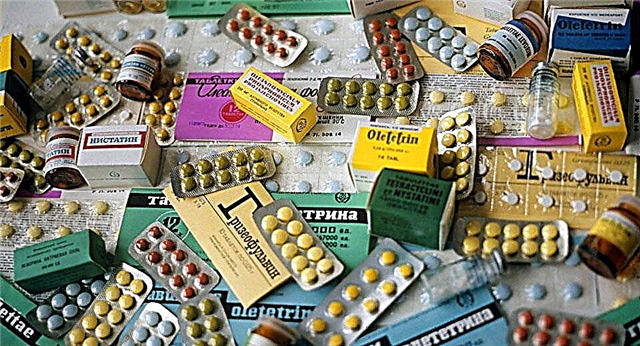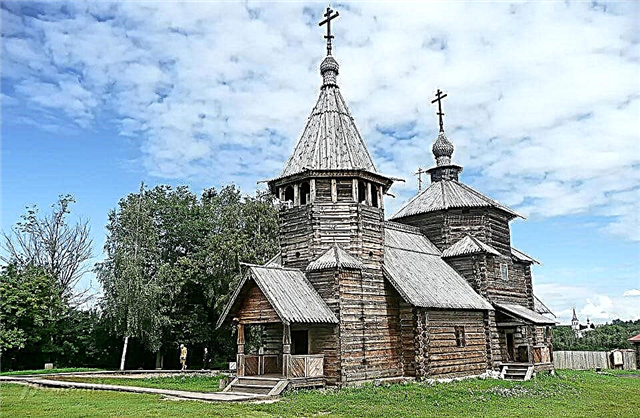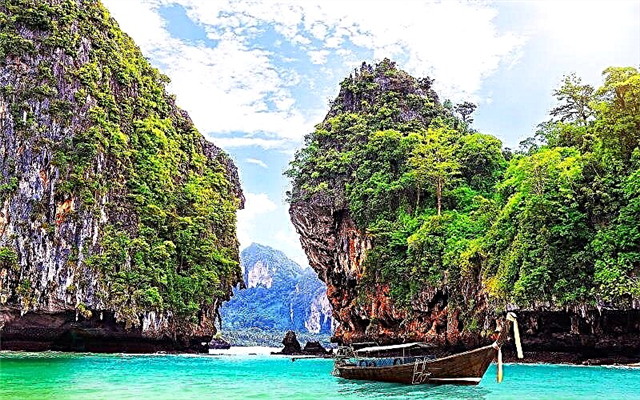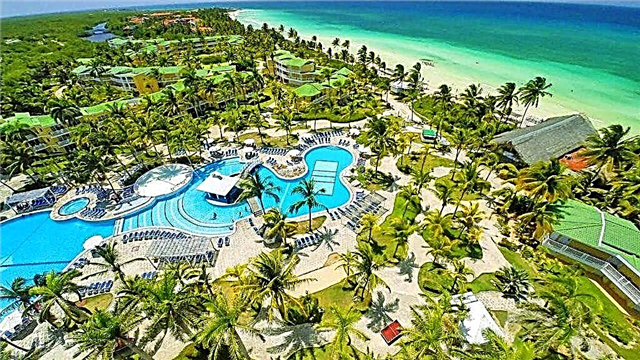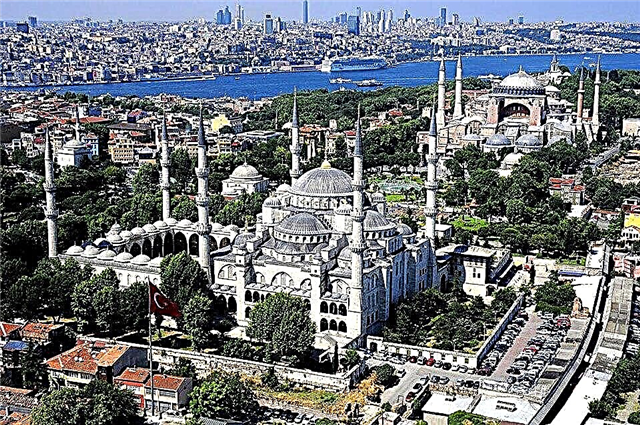The Sultanahmet area in Istanbul is a must-see for all tourists who are tired of a beach holiday and want to get additional impressions. This place is the heart of Turkey. Here, in a small area, objects of Muslim and Christian cultures are concentrated. And visiting them is quite simple: everything is compactly located, you can just move from one attraction to another and admire while you have enough strength. And if you rent a room in a hotel nearby, then you can inspect for several days without rushing. And there are no problems with a snack: around the area there are cafes and restaurants with oriental and European cuisine.
History

It is impossible to imagine that a place located on the most important trade route did not attract the mighty of this world. Greeks, brave seafarers and skilled traders, in the 7th century BC founded a small colony on the site of the modern center of Istanbul. It was named Byzantium. Subsequently, in 330, Emperor Constantine founded a city on the site of the settlement, called New Rome.
According to the king's plan, Constantinople should be not only the economic center of the empire, but also a stronghold of Christianity. Many temples were rebuilt in the city, local residents and merchants performed trade operations, and then praised God. It was during the heyday of the Roman Empire that St. Sophia Cathedral and the Church of St. Irene were built. But the state was weakening, and the Ottoman Empire was gaining strength nearby. It is not surprising that the Turks attempted to seize Constantinople.
They succeeded in 1453. The city began to be called Istanbul, and most of the Christian monuments were destroyed or adapted for economic or religious needs. Today's Istanbul is not the capital of Turkey, and its borders have long gone beyond the borders of the former Byzantium. But it is from this area that tourists begin their acquaintance with the city and the country.
Sights

It is noteworthy that the entire Sultanahmet region is included in the UNESCO Catalog as a World Heritage Site. On a small square, there are monuments of early Christianity and the Ottoman Empire. You can move from object to object on foot: it does not get tired. Better yet, choose a hotel or an apartment in the historic center: then the inspection can be carried out without haste, for several days.
Saint Sophie Cathedral

The place where Hagia Sophia is now located is the oldest in Istanbul. First, there were trading rows on this place, then - a wooden Christian church (also St. Sophia), then (after a bloody riot, when the old church was burned down) - a new St. Sophia. It was ordered to be built by the Emperor Justinian. And Sofia was built with funds from the budget. The construction was colossal: the ruler wished that the temple was a stronghold of Christianity not only in the capital, but throughout the state.
Therefore, to exalt the building, others were shamelessly plundered: the Temple of Artemis in Ephesus, the Temple of the Sun in Rome. 1204 was an unlucky year for Sofia. The city was captured and plundered by the crusaders, who went to liberate the Holy Sepulcher. Instead, they took all the relics of their co-religionists to Europe. By the way, scientists believe that 90% of the artifacts in the temples of the Old World were taken out of Constantinople.

In 1453, Mehmed the Conqueror captured and plundered the cathedral. By his order, the Christian church was converted into a mosque. Muslim services have been conducted for 500 years. But 1939 brought Sophia a rebirth. Atatürk ordered to convert Hagia Sophia into a museum. The cathedral was restored and opened to tourists. But work on the restoration of the interiors is still ongoing.
Obelisk of Theodosius

This landmark appeared in Constantinople under the Emperor Julian the Apostate. And the emperor Constantine ordered to bring the stele to the city from Egypt. But even his son was unable to deliver the convoy. She was abandoned in Alexandria. Julian, learning that the obelisk lies in Alexandria, like a forgotten thing, and people began to worship him like an idol, ordered to immediately deliver it to Constantinople, and erect a statue of him in Alexandria.
The order was carried out, and a granite stele with embossed hieroglyphs adorned the back of the hippodrome. Some historians claim that there were also other smaller obelisks, but neither themselves nor any traces were found. These steles were also located at the hippodrome. The masters of Constantinople did not know the art of lifting heavy columns and placing them “on the heels”, so a marble pedestal with bronze supports was made.
By the way, the marble base is 2000 years younger than the stele, but it has survived somewhat worse. For some time, the obelisk served as a fountain, for which it was supplemented with bowls in which water accumulated. But today it has been restored and appears to tourists in the form in which it stood at the hippodrome.
Snake column

This column served as the basis for the golden altar and was located in Delphi. And it was represented by three snakes coiling into a rope, the heads of which diverged at the top in order to serve as a stand for the bowl. The Greeks made it in 478 BC. by the method of hollow casting from the remains of the weapons of the Persians they defeated. And in 326, by order of Emperor Constantine, the column was transported to the new capital of Byzantium and installed at the hippodrome. But initially it was located on the other side of the Egyptian obelisk. And its size was different: more than 8 m.
The townspeople considered the monument mystical: after its installation, all the snakes in the area disappeared. Another legend claims that Mehmed the Conqueror decided to drive all the reptiles out of the captured city. To do this, he cut down the top of the column, after which the reptiles disappeared (along with part of the structure, of course). Subsequently, part of one of the heads was discovered by archaeologists. Now you can look at it in the archaeological museum of Istanbul. And the second head was taken to England, but this data has not been officially confirmed.
Today, the column impresses tourists with its appearance: inscriptions are engraved on the bodies of the snakes. The base of the structure is located at a depth of 1 m: it is hidden by a cultural layer.
Obelisk of Constantine

This structure, presumably, was ordered by Emperor Constantine to replace the expected Egyptian obelisk. The column consists of slabs of limestone, bonded with mortar. Time has done damage to this statue: part of the masonry has crumbled. Emperor Constantine Porphyrogenitus in the 10th century ordered the restoration of the building. Sheets of copper with images of battle scenes and images of animals were attached to it. The top was topped with a ball or statue (now it is impossible to install).
During the capture of Constantinople by the crusaders, all the bronze parts of the obelisk were taken with them. And the Ottomans continued to destroy the monument: they climbed over it to show prowess. And the slabs with Christian inscriptions were removed too. Today the monument is in poor condition, but the Istanbul administration is trying to find investors for restoration.
Blue Mosque

This building was the work of the life of Sultan Ahmed. He decided that by building a mosque, he would be able to defeat the infidels. The work began in 1609, and ended in 1616. In order to carry out everything planned, the Sultan invited famous masters. For their delicate work they were christened jewelers. Ahmed allocated funds from his own reserves: so he wanted to call on the mercy of heaven. Unfortunately, Ahmed could only look at the idea embodied in stone for a year. Then he died of typhus.
And people were left with a masterpiece that conceals several mysteries and contradictions:
- Sultanahmet is too reminiscent of Hagia Sophia. It seems that the mosque is a reflection of a Christian temple. Only the lines are slightly softer.
- The mosque has 6 minarets, although at that time it was allowed to build temples with no more than 4 minarets.today it is no longer possible to establish whether Ahmed wanted to completely repeat the number of minarets of the Forbidden Mosque in Mecca, or whether the architect was simply mistaken. But today the masterpiece pleases people with 6 chapters.
The interiors of the Blue Mosque impress with their richness and special light that does not irritate the eyes and at the same time brightly illuminates the luxurious decoration. None of the visitors leave here disappointed.
Arasta bazaar

For those who want to fully immerse themselves in the atmosphere of Turkey, imbued with the local spirit, there is no better place than Arasta Bazaar. Nor is it a market in the traditional sense. Here, guests are not grabbed by the hands, imposing leather jackets or other consumer goods. Arasta is an open-air museum whose exhibits are for sale. There is no language barrier: the owners of small pavilions will always invite a neighbor who speaks Russian, German, English or Spanish. And they will treat the potential buyer with excellent tea. By the way, by bargaining, you can reduce the price by 2, or even 3 times.
And you can buy a lot here:
- Carpets. All of them are hand-woven and are especially appreciated. The most popular of the provinces are Hereke or Bunyan.
- Jewelry. Jewelry made of gold, silver with inlaid precious or semiprecious stones are on sale.
- Metal cookware with colored enamel coating, indescribable beauty and durability.
- Jewelry with colored enamel inserts.
It is impossible to list all the goods that are sold in Arasta. You can spend the whole day here. And the impressions (even if there are no purchases) will last for a long time.
Fountain of Sultan Ahmed III

Initially, this fountain was located directly in the coastal area: on Uksudar Square. Sultan Ahmed in 1728 ordered the construction of a structure so that every tired traveler who crossed the Bosphorus could quench his thirst with cool fresh water. But the inscriptions that covered the slabs of the fountain urge all who have tasted the life-giving moisture to offer a prayer for the one who built the wondrous reservoir.
The construction is made in the form of a palace facade. The slabs are decorated with carvings, and taps are embedded in the walls. From which cool water flows slowly. But after a while, the fountain was moved to the gates of the Topkapi Palace. Here you can see him even today, and dip your hand in cool jets to feel eternity.
Carpet Museum

What is the east without carpets? And in the very heart of Istanbul, there is a center where unique exhibits are displayed. In 1979, the newly opened pavilion was located in the premises of the Blue Mosque. But when the number of artifacts became significant, the complex moved to another premises. Now it is located near Hagia Sophia. Now, for the safety of unique items, there are all conditions: the devices maintain the specified temperature and humidity.
And here you can see exhibits from different periods:
- Early Ottoman era. This part displays carpets used by the Seljuks.
- Middle Ottoman era. Tourists are encouraged to familiarize themselves with items woven in Anatolia.
- The last period of the Ottomans. The gallery invites you to admire huge carpets and small prayer rugs.
In total, the center has a collection of more than 2000 items. All of them have been restored and are in good condition.
Topkapi Palace

The life of the Ottoman Empire was concentrated here for several centuries: the Sultan made all the most important decisions in the Topkapi Palace. Money was minted on the territory, a court was held and a sofa sat, a harem was located. The complex had storage facilities for grain and other products, premises for guards, an armory, a treasury and even an underground passage designed for the immediate evacuation of residents. An equipped ship was constantly on duty in the bay, ready to sail.
But the palace fell into disrepair when the Sultan's residence was moved to Dolmabahce. At the beginning of the twentieth century, the complex was restored and turned into a museum. In 1924, it received its first visitors. Today the center has a unique collection of artifacts that any tourist can see. True, one day will not be enough for a comprehensive inspection.
Church of St. Irene

Some historians claim that the temple of St. Irene is older than St. Sophia. It was built at the behest of Emperor Constantine on the site of a temple where sacrifices were made to Aphrodite. And before the Hagia Sophia was rebuilt, it was Aya Irina that was the main temple of the capital. The residence of the Patriarch was also located here.
The Church of Peace has been destroyed and revived more than once:
- It burned during Nick's rebellion. It was restored by the Emperor Justinian.
- The church was destroyed by an earthquake. It was then that the unique mosaics perished.
- 1453 turned Aya Irina into a mosque. It has been rebuilt.
- Since 1869, the building was attached to the Archaeological Museum.
Today the Church of Peace is the Temple of Art. It hosts concerts and music festivals. Tourists note that the acoustics in the halls are exceptional. But guests can see part of the mosaics from the time of Emperor Constantine and admire the architecture of the building.
Archaeological Museum

The exhibition features over 1,000,000 artifacts. And the center was formed at the end of the 19th century as a result of colossal work carried out by the artist and archaeologist Osman Hamdi-Bey. He advocated a ban on the export of cultural heritage outside the country. The construction of the complex began in 1881 and received its first visitors in 1891.
And finally, the exposition was formed more than 20 years later. The number of artifacts grew, and in 1935 another building was built for the center. Today the Archaeological Museum is the most visited place in Istanbul. This is facilitated by a convenient location: the center is located opposite the Topkapi Palace. After walking in the park and examining the chambers of the Ottomans, you can go to the museum and immerse yourself in the time of the pharaohs, and then explore the priceless treasures of civilization.
Gulhane Park

The House of Roses was once part of the Topkapi Palace. The sultan and his courtiers walked in this blooming garden. The entrance to outsiders was closed. Cozy pavilions and secluded pavilions were built for the Vladyka's rest in the House of Roses. And flowers were planted everywhere. But at the end of the 19th century, the park became a public place. Unfortunately, this led to the dilapidation of buildings and general desolation. The destruction was completed by a fire in 1863. Unique gazebos and pavilions perished in the fire.
But at the end of the twentieth century, the park received a rebirth: the territory was cleared, the plantings were restored. There are benches along the paths, on which it is pleasant to relax in the heat. And flowers delight guests throughout the year: tulips are replaced by roses, roses - forget-me-nots. You can enter the oldest park in Istanbul through 3 gates, and the visit is free. This is a wonderful place for tourists tired after the cultural program.
Pavilion of parades

The sultans loved to watch the life of their subjects. But they themselves preferred to remain hidden from prying eyes. To implement this idea, the Parade Pavilion was built. It was erected right on the fortress wall, which separated the Gulhane Garden from the city. The construction is rather modest: after all, its purpose is not a manifestation of the nobility and power of the sovereign. The sultan and his suite were conveniently located on the second floor. The windows overlooked the city street, and the roof protected the observers from the rain and hot sun.
From this pavilion, the rulers watched the processions:
- captains, when replicas of warships were carried past the palace
- artisan guilds during the holidays
And the crazy Ibrahim the Mad loved to shoot the townspeople with a crossbow. Like the entire Topkapi Palace, the Parade Pavilion fell into disrepair after the relocation of the residence in Dolmabahce. The center has been restored today. On the second floor, in the former chambers of the sultans, there is a library. And on the first one there is a cozy cafe, where local artists' disputes sometimes take place.
Church of Saints Sergius and Bacchus - Little Hagia Sophia

Some researchers believe that Hagia Sophia and the Church of Saints Sergius and Bacchus were built by the same architects: the cathedrals are so similar.
And the story of little Hagia Sophia is unusual:
- The initiator of the creation of the church was the emperor Justinian.He especially honored Saints Sergius and Bacchus, soldiers who were martyred for refusing to worship idols.
- The Ottomans captured Constantinople in 1453, but the Church of Saints Sergius and Bacchus was not closed: it worked for 50 years. And only at the beginning of the 16th century it was transformed into a mosque. The building was supplemented with a minaret and a madrasah. The unique mosaics were painted over. The mosque became known as the small Hagia Sophia.
- The mosque was restored several times. The building was extensively reconstructed in the middle of the 20th century.
Unfortunately, today the interiors of little Hagia Sophia do not resemble the temple of Saints Sergius and Bacchus. But tourists can appreciate the similarity of the architectural elements of Hagia Sophia and the current mosque, admire the building.
Sokollu Mosque

This mosque was ordered to build by the Ottoman nobleman Sokollu Mehmed Pasha. At the end of his life, he actually ruled the empire. It is noteworthy that at the birth of the child, they baptized in the temple and gave him the name Baiko. But later he was forced to convert to Islam. The boy graduated from madrasah excellently and was able to make an excellent career. Mehmed Pasha was a versatile educated person: he personally oversaw the construction. As a result, a whole complex was erected: the Sokollu mosque, a madrasah, a fountain for ritual ablutions before prayer, a house for dervishes.
The interiors are modest and majestic at the same time: priceless tiles, engraved with tulips and chrysanthemums, flowers sacred to Muslims. There is a relic in the mosque: particles of the Kaabba stone. One of the oldest mosques in Turkey still operates today. It can be viewed not only from the outside, but also from the inside. At the same time, it is important to follow the rules so as not to offend the feelings of believers.
Popular restaurants and cafes

Well, it is impossible to stay hungry in the historical center of Istanbul! At every step you can find a variety of points for a snack or a serious meal. Tourists recommend several restaurants:
- Sirkeci Restaurant invites you to enjoy oriental. European or Mediterranean cuisine. The service is friendly, there is no language barrier. The restaurant is very cozy.
- Three Partners Cafe & Restaurant has a rich selection of seafood dishes. In addition, there is a good wine list. The service is fast, the atmosphere is welcoming.
- Istanbul Anatolian Cuisine is the perfect place for those guests who decide to appreciate the Turkish cuisine menu. In addition, delicious barbecues and fresh seafood are served. The restaurant is very cozy, you don't want to leave.
- Istanbul Kebab Cafe & Restaurant specializes in Middle Eastern and Turkish cuisines. But guests are offered to enjoy well-executed European and Mediterranean dishes.
In addition, there are many street outlets in the quarter where you can literally have a snack on the go.
Which hotel to choose

Guests recommend several accommodation options in Fatih:
- Kalyon Hotel Istanbul has 4 *. A very good combination of price-quality categories. It's nice that breakfasts are included. They are hearty and tasty, but they do not differ in variety. The hotel is very clean and the rooms are cleaned daily. Main + - location. The windows overlook the Sea of Marmara and the historic center.
- Armada Istanbul Old City Hotel is also marked 4 *. It is a quiet place for families. The Blue Mosque and Hagia Sophia are visible from the windows. Breakfasts are included in the price, they are tasty and varied. The hotel is an easy walk to Topkapi Palace in less than 10 minutes.
- Hotel Ipekyolu is located a 5-minute walk from Topkapi Palace. Great views of the sights. Delicious breakfasts are liked not only by adults, but also by children. Free to use the Internet. Very clean and quiet.
- Armada Apartment is a place for those who want to save money. The hotel is located 700 meters from the Sultanahmet area, in the Fatih quarter. Breakfast included, free Wi-Fi. Daily cleaning service, multilingual staff.
Hotel reservations should be made in advance. And these options are for those who love a beautiful view from the window.
Titanic city taksim
Just 5 minutes walk from Taksim Square
394 Reviews
based on Very good 8.3

Opera Hotel Bosphorus
Rooftop pool and restaurant
based on Very good 7.8

Swissotel The Bosphorus Istanbul
With stunning views of the Bosphorus
922 reviews
based on Very good 9.0

Where is it and how to get there

Sultanahmet is located in the Fatih urban district. It is practically in the very center of Istanbul. The place occupies a part of the land between the Bosphorus and the Sea of Marmara.
There are several ways to get to the Sultanahmet area from Ataturk International Airport:
- By taxi. There is a parking lot near the exit from the terminal. The fare is paid according to the scheme: boarding price + payment for the trip by meter to the place. This is a comfortable, but quite expensive way.
- By bus. HAVABÜS tourist buses run from Ataturk Airport. You should get to the enikapi Sahil stop, and then walk about 1.5 km. You can use the city bus: it will be cheaper.
- Metro. The entrance to the subway is located near the exit from the terminal of Ataturk Airport. Go to Zeytinburnu station. Then change to tram T1 and get off at the Sultanahmet stop.
For convenience, when traveling on foot, it is recommended to use a mobile navigator.

